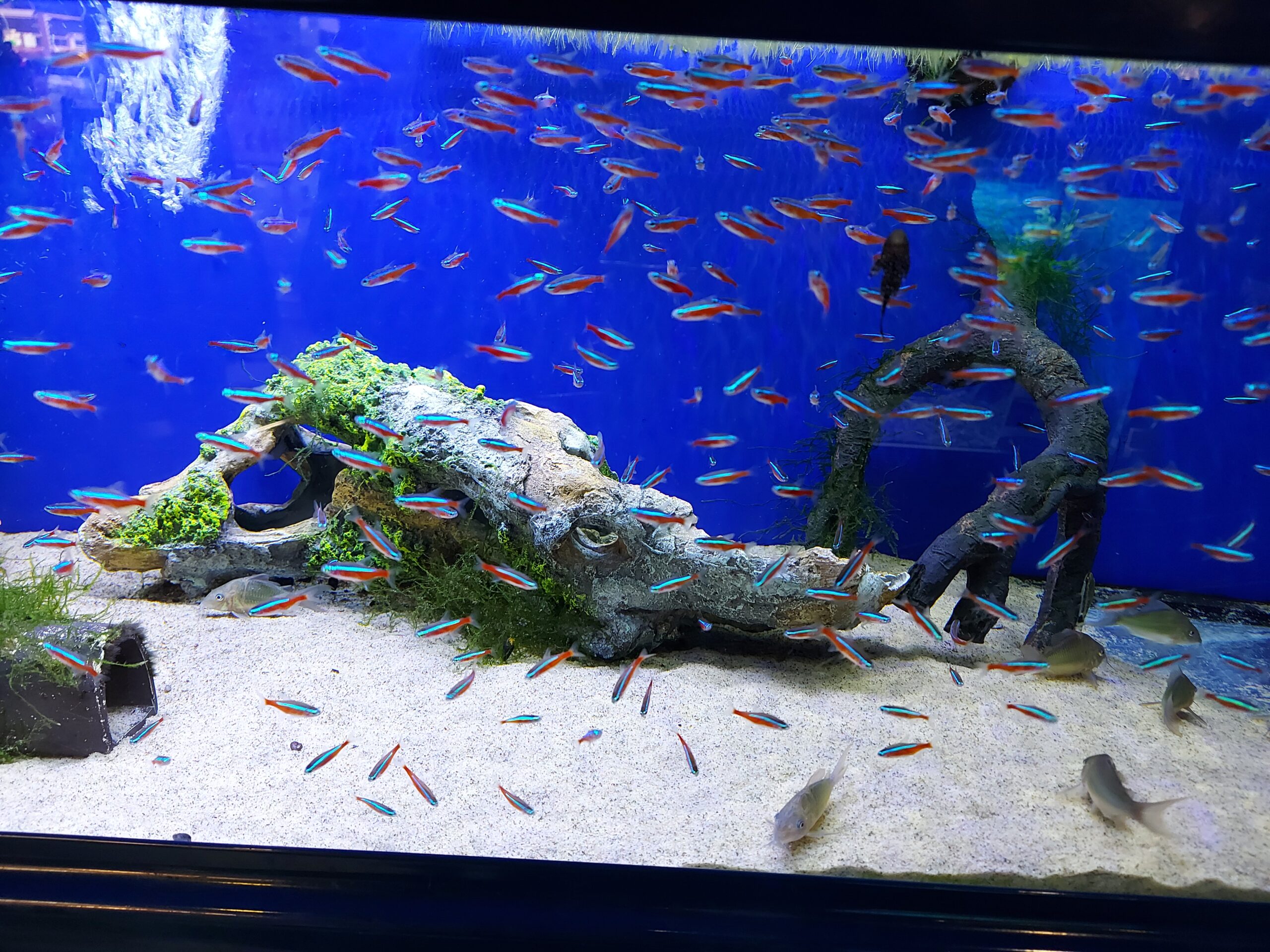Yes, discus fish and neon tetras can coexist in the same aquarium.
However, it is important to keep in mind that discus fish can be quite sensitive to water conditions and may require more attention and maintenance than neon tetras.
Additionally, discus fish are known to be slow eaters, so it is important to make sure that they are getting enough food and that the neon tetras are not eating all of their food.
Overall, with proper care and attention, discus fish and neon tetras can make great tank mates.
This article will provide tips for creating a peaceful and harmonious environment for both species to thrive.
Compatibility of Discus Fish and Neon Tetras
Compatibility is critical when it comes to keeping fish together in an aquarium. Discus fish and neon tetras are popular species that many hobbyists are interested in keeping together.
Here’s what you need to know about the compatibility of these two fish.
Temperature Compatibility
Discus fish are tropical fish that require a water temperature between 82-86°F, while neon tetras prefer a slightly cooler temperature of around 72-78°F.
This difference in temperature preference can make it challenging to keep these two species together in the same tank.
However, it is possible to create a suitable environment for both fish by keeping the water temperature in the middle of their preferred ranges, around 78-82°F.
Monitoring the water temperature regularly is essential to ensure it stays within this range.
Dietary Compatibility
Discus fish are carnivorous and require a diet that is high in protein.
They can be fed various foods, including pellets, flakes, and frozen or live foods such as bloodworms or brine shrimp.
Neon tetras are omnivorous and will eat both plant and animal-based foods. They can be fed a diet of flakes, pellets, and small live or frozen foods such as brine shrimp or daphnia.
While their dietary requirements are different, both species can be fed a high-quality flake or pellet food as a staple diet.
Behavioral Compatibility
Discus fish are generally peaceful, but they can become aggressive towards other fish if they feel threatened or invade their territory.
Neon tetras are small, peaceful fish that do well in groups of six or more. They are not aggressive and are unlikely to bother discus fish.
However, discus fish may see neon tetras as food and try to eat them. To prevent this, keeping the discus well-fed is essential and providing plenty of hiding places for the neon tetras.
In conclusion, while it is possible to keep discus fish and neon tetras together in the same tank, it requires careful consideration of their temperature, dietary, and behavioral requirements.
These two species can coexist peacefully by creating a suitable environment and providing a balanced diet.
Potential Challenges
When considering keeping discus fish with neon tetras, there are several potential challenges that should be taken into account.
Aggressiveness
One of the main challenges is the potential for aggression between the two species. Discus fish are known to be territorial and can become aggressive towards other fish that enter their space.
On the other hand, Neon tetras are small and peaceful fish that can be easily intimidated. If the discus fish feel threatened, they may attack the neon tetras, causing injury or even death.
Water Parameters
Another challenge to consider is the difference in water parameters that discus fish and neon tetras require.
Discus fish prefer warm water with a pH level between 6.0 and 7.0, while neon tetras prefer slightly acidic water with a pH level between 5.0 and 7.0.
Additionally, discus fish require soft water with a low mineral content, while neon tetras can tolerate harder water.
Diet
Discus fish have a specific diet that consists of protein-rich foods such as bloodworms and brine shrimp. On the other hand, Neon tetras are omnivores and require a mixture of plant and animal-based foods
. It can be challenging to provide both species with the appropriate diet without overfeeding or underfeeding one or the other.
Overall, while it is possible to keep discus fish with neon tetras, it is essential to carefully consider these potential challenges and take steps to mitigate them.
Providing ample space, ensuring appropriate water parameters, and carefully monitoring feeding habits can help to ensure a successful cohabitation.
Conclusion
In conclusion, it is possible for discus fish to live with neon tetras, but it requires careful consideration and planning. The two species have different water requirements, making it challenging to maintain a healthy environment for both.
It is essential to ensure that the tank is large enough to accommodate both species comfortably, with plenty of hiding places and swimming space. Maintaining the water quality by performing regular water changes and monitoring the pH levels is also crucial.
While discus fish are generally peaceful, they can become aggressive during breeding season, which can pose a risk to neon tetras. Therefore, keeping only one male discus fish in the tank is recommended to reduce the chances of aggression.
Overall, if the tank is set up correctly, and the water quality is maintained, discus fish and neon tetras can coexist peacefully. However, it is essential to monitor their behavior and make adjustments as necessary to ensure their health and well-being.









